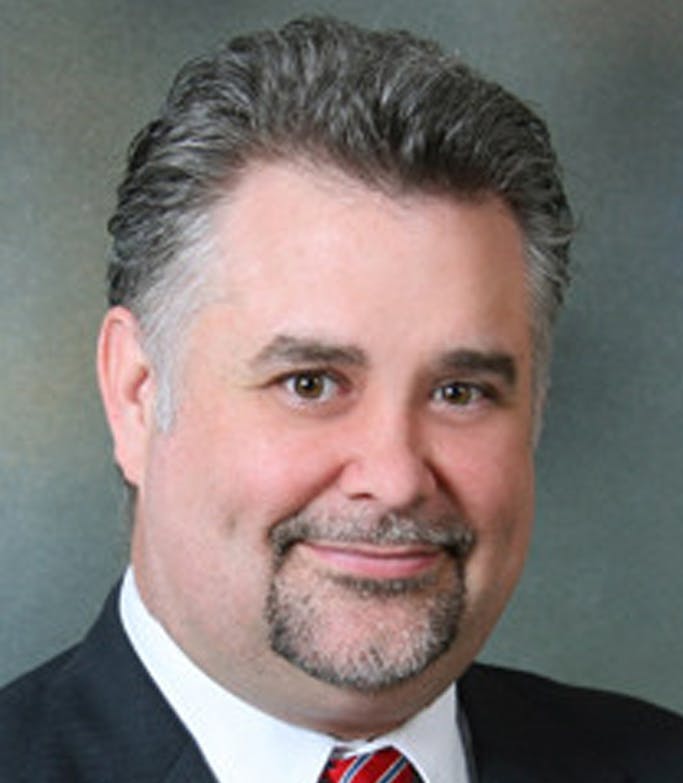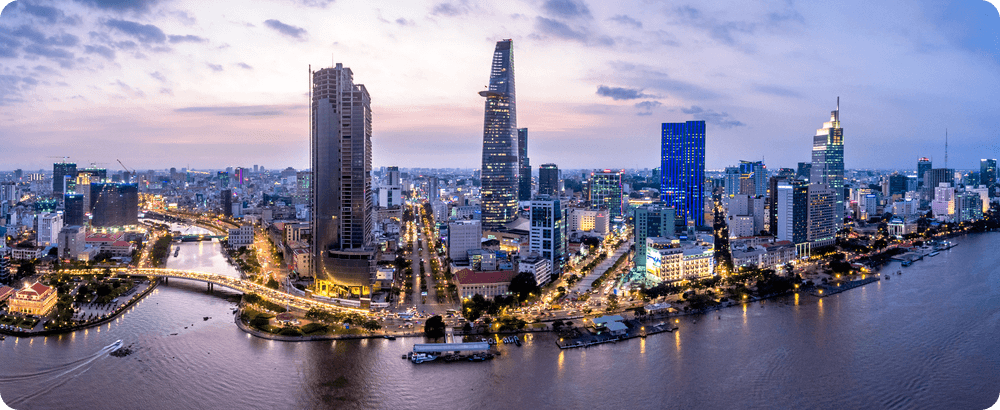We continue with the second article in a three-part series featuring immigration lawyer David Enterline, who has been working in the East Asian EB-5 markets since in 1993.
In this article, Enterline dives into the details about the Vietnamese market: how it’s similar and different from other East Asian markets, and what has changed in Vietnam since the enactment of the EB-5 Reform and Integrity Act of 2022 (RIA).
Vietnamese: new money, youth and energy
“Vietnam has become a very exciting new place. There’s a lot of energy here, not just in our industry, EB-5, but in everything. Everybody I know who comes here has ideas and the belief that, ‘Hey, I can do this here.’”
The Vietnamese market, for Enterline, is similar to the Chinese market 30 years ago. Up until the early 1990s, Vietnam was closed to the world; but then the country opened up and many became very prosperous.
“The Vietnamese now, they have new money, they have disposable income. Many of them want their children to attend school overseas, and the U.S., of course, is still the number one choice,” he says. The Vietnamese, in this last respect, are like 95% of Enterline’s clients from any country: the primary reason to pursue EB-5 is for their children — a better education and employment opportunities after graduation.
Drawing another parallel to China, he says that many affluent Vietnamese citizens have grown their wealth through manufacturing and property markets.
Additionally, Vietnam mirrors China in another important aspect: living in a communist country, investors are eager to move some money out of Vietnam. “They feel their money is safer in the States,” observes Enterline.
But the current Vietnamese also has its differences from other East Asian markets. One such difference is age; Some statistics show that about 60% of the population is under 30. "Young” he emphasizes, “and affluent, very energetic, well-educated. People are optimistic and they're working hard because they now have the freedom to make money and prosper.”
Looking for rural EB-5 investments with thorough due diligence?
Let's TalkVietnamese investors are hands-on and ask questions
Another way in which the Vietnamese EB-5 market differs from other East Asian markets, is how investors approach EB-5 investment projects.
“The Vietnamese investors are a lot more hands-on and they really want to understand the deal better,” he states. “That doesn't mean they're going to read every word of an offering package. But they’re going to ask a lot of questions.”
This attitude means that many Vietnamese won’t simply go with one agent or investment project, as Chinese investors typically do. “They're going to shop around more. They’re not as likely just to trust somebody who says they're going to take care of them.”
Making an $800,000 investment with a yearly remittance limit of $7,000
While the Chinese are limited to remit $50,000 U.S. per year, Vietnamese investors face a standard remittance limit of just about $7,000. This makes the prospect of how to send over $800,000 to the U.S. to pay for an EB-5 investment more of a logic puzzle than a math problem.
But there are solutions. “The correct way in Vietnam,” Enterline explains, “is to go to the government and request an approval to remit money offshore.” Such approval could conceivably be for the full EB-5 investment amount and administration fees.
But how does the communist Vietnamese government feel about successful citizens taking themselves and their money out of the country? “I expect there is government opposition to this,” Enterline says. “You could expect that there's kind of a negative impression towards people who are immigrating overseas, especially involving large investments of money that probably will never return to Vietnam.” Thus, remittance licenses can be difficult to obtain and rarely issued.
So if such a remittance license is not issued, does that end an investor’s EB-5 hopes?
Enterline acknowledges that other options exist, with businesses and even individuals willing to do a currency swap with the investor, but they may be risky. “Now we're getting into a sensitive topic. There are other ways that people try to remit money, but USCIS has been very strict on whether it will accept those paths as compliant. Even if such methods are largely accepted international practice.“
Interestingly, Enterline adds that he believes the recent overall high denial rate of I-526 petitions is in part due to unacceptable paths of funds out of Vietnam. He bases this on experience he’s had with a number of Vietnamese petitioners who filed in the past with other immigration lawyers, and then, after being denied, approached Enterline for help. “Most of these investors relied on an agent to handle everything, including working with a lawyer that the investor has never met and doesn’t know. So now they are seeking independent legal advice”.
When it comes to USCIS, Enterline is critical of the Immigration Service on a couple of points. One, its standards are not consistent and have generally become more difficult to fulfill over time.
Another point Enterline makes is that USCIS will not publish country-specific filings (as opposed to visa-issuance data). “Why not? What's the problem? Why won't you tell us that there’s, for example, a hundred petitioners from Vietnam?”
If USCIS revealed this data, it could help potential investors and lawyers decide whether or not EB-5 makes sense. “If I had that information, I can tell an investor, ‘There are a hundred petitions filed this year. You're going to be petition number 101. And for Vietnamese it's about four visas per family. So you might wait two years or three years. That’s tremendously useful to know.”
But that information is under USCIS lock and key. “Why? After 30 years of practice, I still don’t know why USCIS doesn’t publish the per country petition data”.
Vietnam and retrogression: the truth travels fast
Contrary to the Chinese situation many years ago when investors didn’t know about the staggering lineup for visas they faced, and agents weren’t shedding light on the matter either, Vietnamese investors know their country is backlogged and that means a longer visa wait time for new investors.
Why is the Vietnam market more informed than the Chinese market? “In general,” Enterline says, “it’s because Vietnam is a much, much smaller place, and, the agent industry is much smaller. So, once one agent takes the time to explain retrogression, then others may have to follow. As I said, the Vietnamese are wanting to go, ‘Hmm. Is that true?’ And they go to speak with two or three other people.”
Post-RIA, ‘there’s big appetite for EB-5 now’
The fact that Vietnam is one of the few backlogged countries in the world speaks to the country’s historical appetite for EB-5. But did growing visa lineups mitigate interest in recent years? And has the RIA — especially with the addition of visa set-asides — reignited EB-5 interest?
Enterline saw a flurry of Vietnamese filings in late 2019, before the effective date of the Modernization Rule, which would raise the minimum investment amount from $500,000 to $900,000 (this regulation existed only for only a year and a half before being declared invalid by a court). “People were just rushing in, even though they knew there was going be a long wait for visas.”
And then after that COVID lulled the market in Vietnam, as it did around the world.
But now that the RIA is law, set-aside provisions have sparked the interest of new Vietnamese investors who can see a way around a visa wait of several years. “There’s definitely is a big appetite for EB-5 in Vietnam now,” declares Enterline.
He sees the impact the set-asides are having on the market, starting with the agents who are aggressively promoting them. “ The reserved visas are an opportunity. Get in now, grab one of them, and maybe only wait two or three years.”
Are any Vietnamese still concerned with the wait time associated with standard (non-set-aside) visas? “No, it seems they’re not, because everybody's telling them you can jump the line.”
There is another way the RIA is changing the Vietnam market: in the past, Vietnamese applicants, similar to the Chinese, gravitated to bigger cities. And they were drawn to certain locations with Vietnamese ties; for example, Houston was an attractive investment location as it has the second largest population of Vietnamese in the United States.
But now with the RIA offering rural investors not only reserved visas but priority processing, the Vietnamese are very open to shifting their focus to rural and small-town investment projects.
Vietnam and the future of EB-5
While the RIA has spurred interest in the program, a path to faster visa alone isn’t enough to sustain significant activity in EB-5, as evidenced by the historically low interest from scores of countries that don’t suffer from a backlog. For a particular market to have a sustainably strong interest in EB-5, other local conditions must exist.
Does Vietnam have conditions that will make it a strong EB-5 market for years to come?
Enterline whole heartedly believes so. With an immigration firm in the country he sees firsthand the excitement for the future young Vietnamese people have. “The country in general has a great future because of the economic evolution here and as a result, a future for EB-5. Many of the young Vietnamese want to go to the U.S., and many families do also for their children’s education and all the other opportunities.
Working with a great immigration lawyer familiar with Vietnam’s practices and USCIS requirements seems like a great way to start the EB-5 journey.
Read David Enterline's Vietnamese translation of this article
Read David Enterline's Chinese translation of this article






